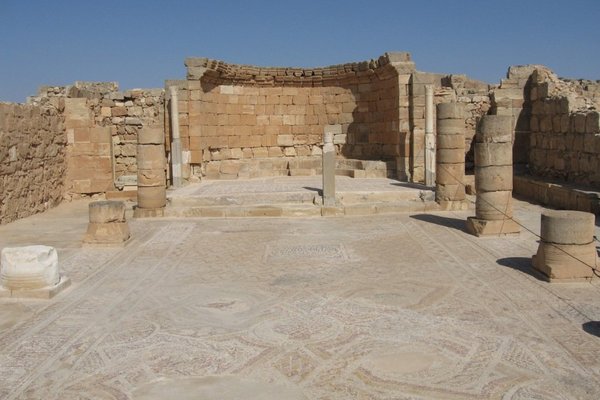Israel
Incense Route of the Negev
Incense Route - Desert Cities in the Negev reflects the hugely profitable trade in frankincense and myrrh which flourished 2300-1800 years ago.
The site comprises the four Nabatean towns of Haluza, Mamshit, Avdat and Shivta, with their associated fortresses and agricultural landscapes, which are located along a 100km stretch of the Route. The Nabateans used a sophisticated water collection and irrigation system to allow large-scale agriculture in this harsh desert.
Community Perspective: The site lies in a less-travelled part of Israel. Avdat is the most touristy of these four archeological sites. Although the ruins (walls and rubble!) are originally Nabatean, a lot of what you see now is of a later (Christian) period.
Site Info
Official Information
- Full Name
- Incense Route and Desert Cities of the Negev (ID: 1107)
- Country
- Israel
- Status
-
Inscribed 2005
Site history
History of Incense Route of the Negev
- 2005: Revision
- Includes former TWHS Shivta (2000)
- 2005: Inscribed
- Inscribed
- 2004: Referred
- To strengthen the comparative analysis
- Type
- Cultural
- Criteria
- iii
- v
Links
- UNESCO
- whc.unesco.org
- Official
-
- en.parks.org.il — Oboda
- en.parks.org.il — Shivta
- en.parks.org.il — Mamshit
- Related
-
- nabataea.net — Nabateans in the Negev
All Links
UNESCO.org
- whc.unesco.org — whc.unesco.org/
Official Website
- en.parks.org.il — Oboda
- en.parks.org.il — Shivta
- en.parks.org.il — Mamshit
Related Resources
- nabataea.net — Nabateans in the Negev
News Article
- March 16, 2019 www1.cbn.com — Archaeologists Unearth Rare 1,700 Year Inscription and Church in Israeli Desert
- Jan. 9, 2016 aurora-israel.co.il — Christian-Greek inscription reveals the problematic relationship that existed between these communities when the Byzantine society disintegrated in the Negev
- May 22, 2015 algemeiner.com — Vandals Paint Palestinian Flags Over Israeli Negev WHS of Haluza
- Oct. 6, 2009 thestar.com — Vandals deface Israeli World Heritage site of Avdat
Community Information
- Community Category
- Cultural Landscape: Relict
Travel Information
Southern Levant hotspot
Recent Connections
-
Spice Route
“reflect the prosperity of the Nabatean… -
Desert Cultural Landscapes
Criterion (v): The almost fossilized re… -
Extended from original TWHS
Originally only Shivta (Sobota).
Connections of Incense Route of the Negev
- Individual People
-
-
Lawrence of Arabia
Excavated Elusa
-
- Geography
-
-
Cirques
Part of the site is situated in the Makhtesh Ramon. "The term cirque is also used for amphitheater-shaped, fluvial-erosion features. For example an approximately 200 km2 anticlinal erosion cirque is found at 30 35 N, 34 45 E on the southern boundary of the Negev highlands. This erosional cirque or makhtesh was formed by intermittent river flow in the Makhtesh Ramon cutting through layers of limestone and chalk, which results in cirque walls with a sheer 200 m drop" (Wiki) -
Desert Cultural Landscapes
Criterion (v): The almost fossilized remains of towns, forts, caravanserais and sophisticated agricultural systems strung out along the Incense Route in the Negev desert, display an outstanding response to a hostile desert environment and one that flourished for five centuries. -
Linear inscriptions
Incense & Spice Route (between Ovdat and Moa)
-
- Trivia
-
-
Built or owned by British
Mamshit was used as a British police station during the British Mandate.
-
- History
-
-
Buried treasures
Mamshit: The biggest treasure ever found in Israel: 10500 silver coins, 158 pounds of plumbum tonque with foundry signs and a papyrus cluster with Greek ancient texts. -
Historical Food Remains
Shivta -
Nabatean culture
remains of Nabatean desert settlements on a trade route -
Byzantine Empire and Civilization
By the 2nd century AD all the Nabatean towns had become annexed to the Roman Province of Arabia after the Roman conquest of Petra. (AB ev)
-
- Ecology
-
-
Turtles and tortoises
Kleinmann's tortoise
-
- Architecture
-
-
Cave dwellings
Avdat -
Mosaic art
Mosaic at the basilica in Memphis (Mamshit)
-
- Damaged
-
-
Destroyed or damaged by Earthquake
Oboda 630
-
- World Heritage Process
-
-
Cultural sites rejected for Natural criteria
The site was originally proposed as Makhteshim Country (mixed). After a deferral in 2001 the site was separated into a cultural nomination (Incense Route) and a natural nomination (Makhteshim Country). In 2005 the natural nomination was withdrawn and the cultural accepted -
First sites filling gaps cited by ICOMOS
cultural route 2005
-
Extended from original TWHS
Originally only Shivta (Sobota).
-
- Religion and Belief
-
-
Notable mosques
Sobota -
Religious Relics
Some human remains were found in one of Mamshit's churches. It is assumed they were connected to a Christian ritual.
-
- Human Activity
-
-
Irrigation and drainage
-
Cultural Routes
-
Spice Route
“reflect the prosperity of the Nabatean Spice trade over five hundred years from the third century BC” (AB ev) -
Incense Route
Towns that prospered because of the profitable trade in frankincense (and myrrh) from south Arabia to the Mediterranean, which flourished from the 3rd century BC until the 2nd century AD -
Locations for playing sport
Hypodrome at Elusa
-
- Constructions
-
-
Caravanserai
Moa -
Latrines
Mamshit -
Horse Stables
Mamshit -
Cemeteries
Three cemeteries at Mamshit -
Tombs
Tomb of Aurelia Molcha at Avdat -
Baths
Moa, Mamshit, Sobota, Avdat -
Gates depicting Lions
Avdat Byzantine Gate -
Mausolea
Elusa -
Theatres and Opera Houses
Roman theatre in Haluza -
Sundial
Mamshit -
Dovecotes
Sobota -
Acropolis
Oboda - "Before the end of the 1st century BCE a temple platform (the acropolis) was created along the western edge of the plateau" (wiki)
-
- Timeline
-
-
Built in the 3rd century BC
"The towns, fortresses, caravanserai and fossilised agricultural landscapes.. reflect the prosperity of the Nabatean spice trade over 500 years from the 3rd century BC, .. and then its subsequent decline in the 2nd century AD with the Roman occupation of Petra. The sites have been preserved due to their almost total abandonment in the 7th century AD" (AB)
-
- WHS Hotspots
-
-
Southern Levant hotspot
Closest location is Avdat, 170km -
Israel and Palestine Hotspot
-
News
- www1.cbn.com 03/16/2019
- Archaeologists Unearth Rare 1,700 …
- aurora-israel.co.il 01/09/2016
- Christian-Greek inscription reveal…
- algemeiner.com 05/22/2015
- Vandals Paint Palestinian Flags Ov…
Recent Visitors
Visitors of Incense Route of the Negev
- Alberto Rodriguez Gutierrez
- Alexander Lehmann
- AndreaTLV
- Argo
- Assif
- Atila Ege
- BaziFettehenne
- Bram de Bruin
- Cezar Grozavu
- Corinne Vail
- ctravel
- CynthiaW
- Daniela Hohmann
- Daniel Chazad
- Danny L
- David Marton
- Dennis Nicklaus
- Dimitar Krastev
- Erik Jelinek
- Eva Kisgyorgy
- Gary Arndt
- Grzegorz Andruszkiewicz
- Iain Jackson
- Ilya Burlak
- irosey
- Ivan Rucek
- Jarek Pokrzywnicki
- Jawnbeary
- Jay T
- Jens
- John Smaranda
- k2flake
- kjluebke
- Knut
- Kurt Lauer
- Lameduck99
- Lara Adler
- Luis Filipe Gaspar
- Lukasz Palczewski
- Maciej Gil
- Małgosia Łupicka
- Martina Rúčková
- MaYumin
- Michael Novins
- Mikan22
- Mikko
- Milan Jirasek
- Miloš Tašković
- Mkandasa
- MMM
- Morodhi
- nan
- Nihal Ege
- Patrik
- Petteri
- Philipp Peterer
- Ralf Regele
- Roger Ourset
- Roman Bruehwiler
- Rudegirl
- serghei.belous
- Sergio Arjona
- sncjob
- Solivagant
- Sorel Americo
- Stanislaw Warwas
- Szucs Tamas
- Tamara Ratz
- Tarquinio_Superbo
- Thomas Buechler
- Thomas Harold Watson
- Thomas van der Walt
- tony0001
- Tsunami
- Valentina
- Vanessa Buechler
- Veronica
- WalGra
- Walter
- Wojciech Fedoruk
- YaroMir
- Yongcheng Liu
- Zoë Sheng
Community Reviews
Show full reviews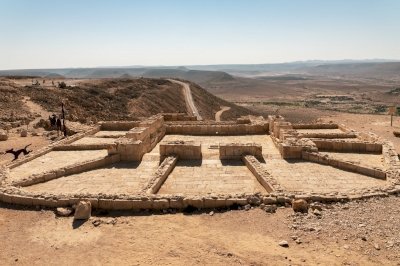
I visited Mamshit and Avdat on my trip to Israel in November 2019. Unlike the Biblical Tels, the archaeological sites of the Nabatean towns offer enough of standing remains to help imagine what the places looked like at the height of their prosperity, and in that respect are more visually interesting. Large portions of the sites are still shapeless piles of rocks, but there are also high walls, defined interior spaces, and some structures that survived in reasonable shape. Where the arches survive, they are definitely among the most eye-catching details. And the temples are usually the places where you can find the best remaining decorative details, such as floor mosaics or columns.
Avdat, additionally, sits on top of a high hill overlooking the desert. You can clearly distinguish the actual line of the erstwhile Incense Route across the desert from Avdat terraces, and the wide views are nothing short of stunning. The remains of a wine press outside of southern gates is a fairly unique feature for an archaeological site, which are normally dominated by fortifications, palaces, temples, and bathhouses. The geographical position, the views, and the state of preservation at Avdat combined to make it one of my favorite ancient sites in Israel.
Mamshit is just over an hour away from Tel Aviv by car, while Avdat is another half an hour further south on one of the main routes towards Eilat and the Red Sea. I was one of just a handful of visitors at …
Keep reading 0 comments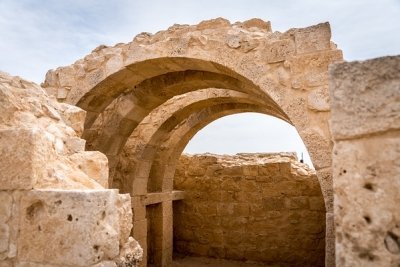
The ruins which compromise the Incense Route of the Negev mostly date back to the crusader era, even though the cities themselves are much older. That is why you will see Christian iconography and other symbols. The towns were part of a network of trading sites which extended from Oman, through Saudi Arabia, Jordan, and Israel. The Nabatean city of Petra was also part of the same trading network.I visited Avdat and Shivta National Parks, which are pretty easy to reach by car. You could visit all of the sites by car on a day trip from Jerusalem or Tel-Aviv.
Keep reading 0 comments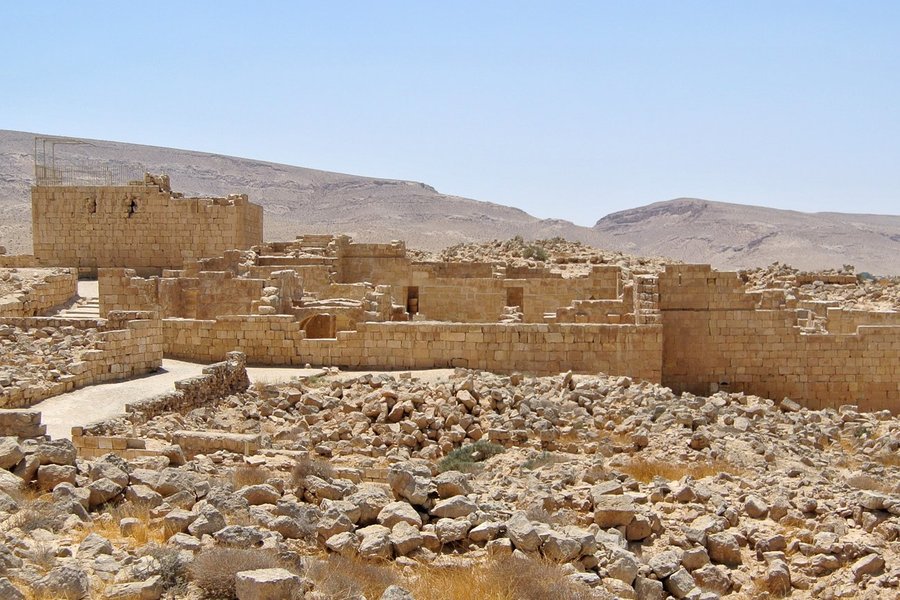
During my visit in Israel I have visited only one of the inscribed locations - Mamshit. The site is located not far from the main road along the Jordanian border from Eilat to northern parts of Israel. Visiting Mamshit may be easily combined with Masada or Dead Sea, as these places are relatively not far from this site.
Mamshit played an important role during the golden times of Incense Route but it was abandoned after Arabian conquest of Palestine. Despite this long time of abandonment (or maybe because of that) Mamshit is relatively well preserved and may please even those visitors who are not big fans of archeology. Mamshit is not big and even one hour stay may be enough to visit the site and allows visitors to realize how the city looked like 1500 years ago. In December the site was not crowded at all (in fact it applies to all WHS in Israel except Jerusalem) and spending 22 NIS for the ticket was definitely worth it.
Keep reading 0 comments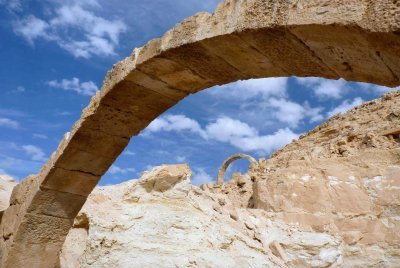
I often find that a good guide as to how “worthwhile” a WHS visit has been is the extent to which, 2-3 weeks later, I feel I can find anything of value/interest to say about it in a review and how much “follow up” interest and research it has generated. On that basis our Incense Route visits failed miserably!
We visited Mamshit, Shivta and Avdat in that sequence across 2 days by car using the Beersheba area as a base. It can’t be that we rushed the visits as we in fact had plenty of time and only additionally visited Tel Beersheba and the Makhtesh Country on those days.
We have previously visited the rock-cut Nabatean sites of Petra and al-Hijr (Saudi Arabia) so, whilst we were perfectly aware that the Incense Route sites were not of that type, we did perhaps have expectations which were too high. What you get is a lot of not particularly spectacular desert scenery (though the more impressive makhtish are close by) and a lot of “walls” - Walls of houses, temples, churches, mosques, bath-houses, wine presses, markets etc, covering periods from around 1st century BCE through to around 5th century CE and encompassing Roman and Byzantine architectural styles. Some of the walls are accompanied by arches (Photo from Avdat), pillars and other architectural features plus some carvings and the occasional reservoir/water collection system (but NO tunnels, unlike so many of the sites we visited on this trip!!), mosaic (none of which …
Keep reading 0 comments
We have visited three of the four Nabatean seetlements in the Negev mentioned, as well as others further south. The Negev is a sparsely populated arid region with limited public transport, so however you travel, you will need stout footwear and lots of water.
We went by car, but there are bus services from Beersheva to Avdat (Beersheva to Mizpe Ramon bus, then a long uphill hike), Mamshit (Beersheva to Dimona, then a 10 km walk or hitch from Dimona), and Shivta (Beersheva to Nizzana bus - twice daily, then a 8 km walk from the turn-off).
These three towns are in a good state of repair, being only around two thousand years old, and are not frequented by visitors much.
The Nabateans built the towns as a series of resting places for their caravans travelling from Egypt and Gaza to Petra and beyond. Some additions were made by the superceding Romans and Byzantines.
Keep reading 0 comments
There are many other interesting things to visit in the Negev Heights (Ramat Hanegev) region, such as oases (Ein Avdat, Ein Zik), the Large, Small and Ramon Craters, and the recently developed wine route, which is combining eco-tourism with boutique wineries, olive growing, and the cottage-industry production of goat cheese (all of which is pretty amazing in an arid desert region of approximately 300 sunny days per year, and only about 70mm of rain). This is a less-travelled part of Israel, but well worth the visit, either as a special trip or on your way south from the centre of the country to Eilat. The roads are excellent and there is a bus service approximately once an hour from Beer Sheva. Make sure you bring a hat, good walking shoes (not sandals) and plenty of drinking water. Camp sites are not as well equipped as in some other parts of the world, but there are excellent field schools (some with hostel accommodation) and bed & breakfasts in the area.
Keep reading 0 comments
I've only been to two of the Nabatean cities in the Negev: Shivta (Sobota) and Avdat (Oboda). Both are well worth a visit if you are into desert landscapes and antiques. Sobota is the better preserved one among these two. It clearly shows the original urban structure and features two churches. A nearby fruit garden uses traditional agriculture (solely based on rain water) in order to reconstruct the Nabatean way of life in this arid climate. Sobota is inaccessible if you don't arrive by car and is usually empty. During my visit here me and my friends were the only visitors although we stayed for two hours! Add the already isolated desert environment and you get a feel of what it is like to live here.
Oboda is a larger complex and also has the advantage of being situated atop a hill on the road between Beer-Sheva (Bersheba) and Eilat (easily accessible with public transport). It also includes a reconstructed Nabatean house worth a visit. The surroundings are abundant with caves which the Nabateans used to exploit for various purposes. The nearby Oboda Spring is of exceptional natural beauty.
If you come down here don't miss the nearby Ramon cirque by any chance. It is world unique.
Keep reading 0 comments
